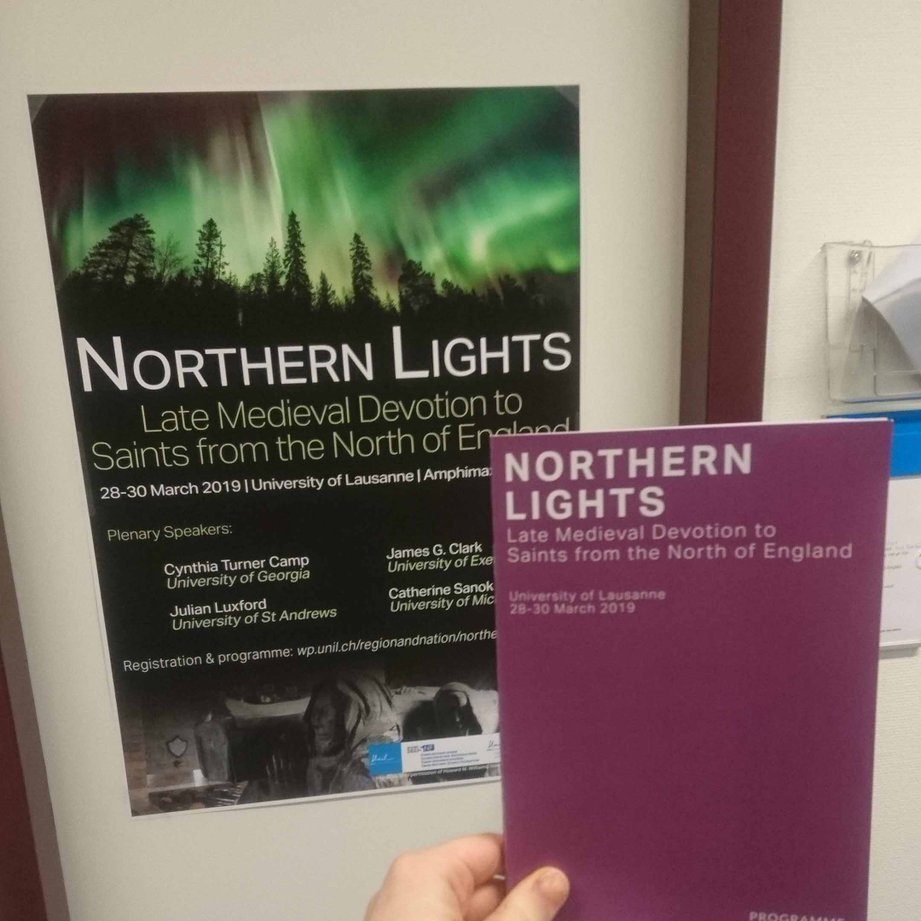Project leader Professor Denis Renevey reflects on his recent trip to Japan, where he presented on the life and writings of Yorkshire hermit Richard Rolle.
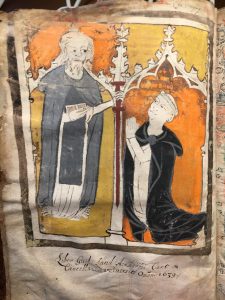
Richard Rolle was born in c.1300 in Thornton, near Pickering, North Yorkshire. After studying in Oxford for a few years, he returned home without a university degree and began a life as a hermit. Rolle wrote a large number of treatises in Latin and English and became the most popular English author of the fifteenth century. Today, he hardly receives any notice in university classrooms in the West, so it is always a challenge for me to present aspects of his writings and spirituality to students at the University of Lausanne, my home university. I really wondered how I was going to be able to succeed doing so with students from a completely different background.

My knowledge of Rolle’s circumstances and writings became the lens through which I began to explore the many facets of Japanese culture. Following our arrival we immediately boarded a bullet train to Shizuoka where the first part of my academic visit was taking place. Once comfortably seated, I had leisure to look out at the densely populated stretch of coastal land between Tokyo and Shizuoka, on Honshu Island – the largest and most densely populated of the 3,000 islands that make the Japanese archipelago.
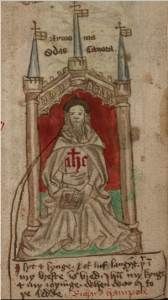
Thinking of the solitary life of Rolle in the North of England, I thought there could not be a more drastic contrast, spatially speaking, between his life conditions and the often hectic life that Japanese citizens lead in many of the country’s megalopolises. Rolle lived a solitary life away from the bustle and turbulence of medieval urban centres, and I wondered how one could possibly understand today, in very densely populated Japan, his passion for solitude as the best condition for the spiritual life.
My journey brought me to Nara and Kyoto, both of them former capitals of Japan, but also major centres of zen Buddhism. If I was impressed by the magnificence of the buddhist temples of Kofuku-ji and Todai-ji in Nara, and Nanzen-ji and Kinkaku-ji in Kyoto, my search for meditative space found its fulfilment in slightly less frequently visited temples and gardens in the suburbs of Kyoto.
The Tenryu-ji Zen Temple and its garden, as well as the Jojakko-Ji Temple, offer an environment that naturally leads one to sit and meditate. As I did so, I remembered the sitting posture that Rolle recommends for meditation, which is unusual in the West but the favoured position (called zazen) in zen Buddhism. Rolle recommends the sitting posture in several of his treatises. He even turns the advice into poetic form in the lyric called Cantus amoris, which is part of his epistle Ego dormio: ‘I sytt and syng of luf langyng that in in my breste es bredde.’¹
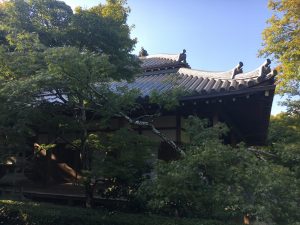
The more I thought about what is considered a rather idiosyncratic form of mysticism on the part of Rolle, the more I realised that there are interesting similarities between Western and Eastern practices. I reflected then on the way in which our northern hermit gives prominence to the repetition of the name of Jesus as a meditative practice, which can be compared with the repetition of one-word mantras in Buddhist meditation.
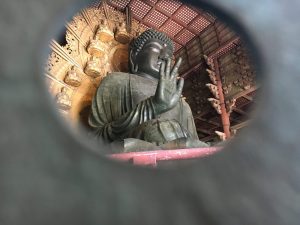
Of course the repetition of the Name of Jesus, name above all other names, creates a different set of experiences and images from the use of ‘aum’, the mantra of mantras. Also, I pondered the differences between meditating on the fully awakened state as represented in the figure of the Buddha, and meditating on the concept of sacrifice and salvation that the representation of the suffering Jesus on the cross offers to Christians. These were fascinating moments in the dialogic exchange between Christian and Buddhist practices that was taking place in my mind.
My lecture on Rolle and northern English eremitism took place in the later stage of my Japanese visit. The time spent in Japan, although far too brief, nevertheless gave me some insights about how to bring Rolle to the attention of Japanese students unfamiliar with his writings. Despite the differences as well as similarities between the cultures and their respective spiritual practices, it was nevertheless possible to engage in a dialogue that turned to be very enriching for all of us.
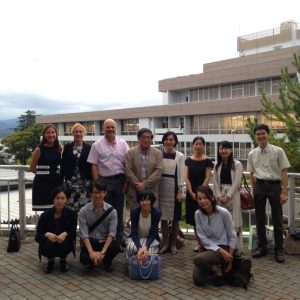
And when at times students remained silent following some of my questions, I remembered both Rolle’s search for silence and the characteristic polite and humble reserve of Japanese people. Sharing the life and works of a northern English medieval hermit with my Japanese audience turned out to be a fascinating exercise in cultural and human discovery.
Denis Renevey
Professor of Medieval English Language and Literature
University of Lausanne
– – – – – – – – – – – – – – –
[1] Hope Emily Allen (ed.), English Writings of Richard Rolle, Hermit of Hampole (Gloucester: Alan Sutton, repr. 1988), p. 71.

